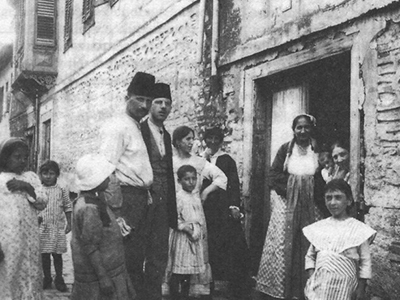
February 4, 1921
In Salonica, the Conference of Greek Zionists adopts a resolution declaring that Jewish education at the Alliance Israelite Universelle Schools does not meet with Jewish national views and aspirations and calls for a new syllabus.
Having been established in Paris in 1860, the Alliance Israelite Universelle was the first modern international Jewish organization that was focused on improving Jewish unity and defending and aiding those Jews living in areas where Jews did not have equal rights. The aims of the Alliance were, “to work everywhere for the emancipation and moral progress of the Jews; to lend effectual support to those who suffer through being Jews; and to encourage every publication to bring about (advocate for) this result.”
One of the methods in reaching their aims was to establish a network of schools in areas where Jews were not only suffering, but were perceived by the Alliance leadership to have, “intellectually and morally fallen below the Jews of Russia and Romania.” (Jacques Bigart, Secretary of the Alliance Israelite Universelle American Jewish Yearbook, Volume 2, 1900-1901). Alliance schools were thus established throughout the Sephardi world (the Balkans, North Africa and the Middle East), with the first school opening in Morocco in 1862. By 1900 there were 95 Alliance Schools with 24,000 pupils in Morocco, Egypt, Tunisia Libya, Bulgaria, Turkey, Greece, Iraq, Romania and Iran. The school in Salonica opened in 1873.
The Alliance Schools promoted Western values and ideas of Jewish emancipation and included instruction of French. The schools, while teaching Jewish history, did not promote Zionism or teach Hebrew as a spoken language, and the level and amount of instruction in Jewish subjects varied from school to school.
The backlash against the Alliance school in Salonica was typical of many communities, especially after World War I with the slow rise of attachment to political Zionism and the bubbling nationalist spirit that followed in many Jewish communities. One reaction came from the head of the Zionist Organization in Iran, written in a request in 1920 to the Zionist Executive in London. “We ask you to establish a Jewish nationalist school in all senses of the term in Teheran, as no Jewish school, in the full sense of the term, may be found in Persia at present. … Send us nationalist Hebrew teachers … because only nationalist Hebrew teachers in all senses of the term, who know how to speak Hebrew, can revitalize the Jewish People … in Persia.” (Avraham Cohen, “Iranian Jewry and the Educational Endeavors of the Alliance Israelite Universelle” in Jewish Social Studies, vol. 48, no. 1, Winter, 1986, pp. 19-20).
